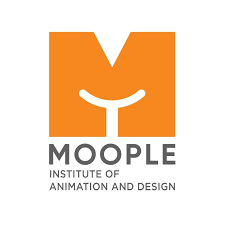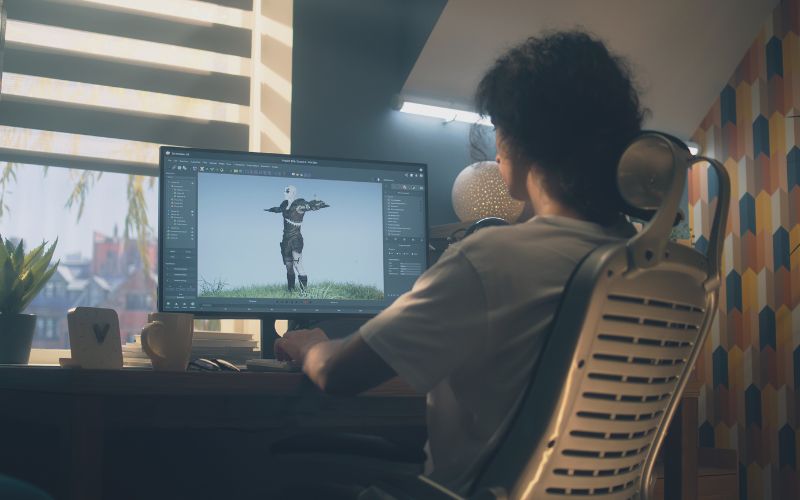3D animation is a wonderful blend of creative art and technology. It provides a perfect medium for designers to bring characters, objects, and environments to life. Whether it is for films, video games, or commercials, 3D animation has developed as a very potent tool for storytelling.
However, it takes time and effort to achieve smooth, realistic, yet engrossing animations. If you are a beginner or an aspiring animator, you might wonder, “How can I improve my 3D animation skills?”
This article gives a straightforward guide with 10 expert tips that can hone your skills toward the achievement of the next milestone in 3D animation design.
What is 3D Animation Design?
This is the digital art of drawing moving images into existence. That is unlike in 2D animation, where the pictures are very flat, meaning no depth in the animation texture or moving images. Now, in three-dimensional animation modelling, rigging, texturing, lighting, and rendering in creating lifelike characters as well as backgrounds.
Movies, games, architecture, advertisements, and educational content make their content attractive by using 3D animation. This gives high-paid employment as well as opportunities to take on interesting projects.
1.Master the Basics First
Animation is, fundamentally, the art of storytelling. Every movement is important. So, don’t just jump straight into complex techniques. Master the basics. All things considered, you lay the groundwork for fluid, believable animation when you are aware of concepts like timing and spacing, squash and stretch, anticipation, and easing in and out.
These principles take animation beyond mere motion into a realm where characters can move with meaning and life, as opposed to appearing mechanised. Master the basics here, as in learning to walk before one can run. All animation thereafter will flow easily and express professionalism.
2.Observe Real Life in Motion
The best animators are true watchers of life. Every action, from the playful skip of a child to the effortless glide of a bird to the swaying of a leaf on the wind, obeys the laws of natural physics. If it moves, videotape it, observe what it does, and look at the movements of people and all the animals.
Refer to movies, sports, or what’s happening around you. Learning to translate how weights shift, how muscles respond, and how moving with emotion will come to life in your animation.
3.Pay Attention to Weight and Physics
Nothing happens in a vacuum. Every action must produce a reaction, and objects move differently based on many variables, such as weight and momentum. For instance, a feather will float softly, whereas a bowling ball will crash heavily downwards.
A character jumps, shifts its weight, bends its knees, and the landing will be just about a natural progression. Knowing physics in animation guarantees objects will feel heavy, and characters won’t move unnaturally.
4.Take Care About Poses and Silhouettes
A strong pose should tell a story, even without motion. In an instant, we all get it. A character is either running in fear or standing triumphantly. A clean, uncluttered silhouette makes the action readable at a glance—whatever is portrayed as such.
The moment you add action, see to it that this pose speaks for the emotion the animation tries to express; it makes things more lively and visually striking.
5.Use the “Slow In & Slow Out” Technique
Nothing in nature begins or ends abruptly. A car does not approach top speed in a slow, measured start; equally, it does not come to an abrupt stop. The same is true of animation.
Using slow in and slow out makes everything look more organic and more fluid rather than stiff and robotic. The results are more animated, with smooth transitions and believable edits.
6.Work on Facial Expressions and Emotions
While characters are supposed to move, they express emotions. Subtle consideration will leave the most minute raise of the eyebrow, a slight twitch of the mouth, or alteration of the eye movement, making an animation that was previously lifeless dramatically engaging. Study real people. Use a mirror to act out expressions.
Understand how microexpressions help contribute to emotions. The great animation connects with the audience on an emotional level, and it all begins with expressive faces.
7.Learn to Use the Graph Editor
If animation is an art, the Graph Editor is your fine-tuning tool. It is where the magic happens. Speed curves, easing effects, and motion paths allow for adjustment in control of how an object moves smoothly, how fast a character can react to something that comes their way, and how fluid a transition will be.
Learning how to manipulate these curves elevates your animation from “good” to “incredibly polished.”
8.Use Secondary Motion
Main movements tell the story, but secondary motion adds realism and depth. If a character turns their head, their hair should lag slightly behind. If they run, their clothes and accessories should react to the motion.
Without these subtle details, animations feel stiff and unnatural. Adding secondary motion makes movements look fluid, immersive, and believable.
9.Work with Lights and Shadows
Lighting equals emotion. Soft warmth makes the scene feel inviting, while high-contrast shadows add intensity. The correct lighting grants depth in a live-action world where details pop out and where the eye is led.
Try different light sources, dramatic highlights, and shadows to evoke a mood that will enhance the storytelling of your animation.
10.Don’t Stop Practicing and Seek Feedback
Animation is an ever-evolving skill. No one masters this overnight. Even the best animators never stop learning. So keep trying things out; make short sequences, try new techniques, and set yourself new challenges with different projects.
Seek feedback from professionals, mentors, and fellow animators. A little constructive criticism will help them to refine their skills, while fresh perspectives will enable them to catch improvements they could easily have overlooked.
Topics Taught in a 3D Animation Course
Most professional 3D animation courses impart everything from basic to advanced techniques. Here is what students learn:
- Fundamentals of Animation: Involving the learning of such principles as squash and stretch, anticipation, and timing.
- 3D Modelling: This includes designing characters, objects, and environments using industry-standard software.
- Texturing & Lighting: Applying materials, colours, and shadows with realistic effects.
- Rigging & Character Animation: Adding skeletons to models and making them move.
- Rendering & Compositing: Bringing animations to life with final touches and special effects.
- Live Projects & Portfolio Development: Work on real clients/projects to showcase their skills.
It leaves students with a great portfolio, which gets them into high-paid jobs with animation studios, gaming companies, and the film industry.
Why Choose Moople Academy for 3D Animation?
The choice of institute where one can pursue training in 3D animation is very crucial. Wherein Moople Academy offers:
- Expert Faculty: Learn from experienced industry professionals
- Practical Learning: Work on live Projects, Short films, and Real-world Assignments
- Job Placement Assistance: Career support and interview training assistance
- Cutting-Edge Tools: Hands-on training with the latest animation software: Maya, Blender, and Cinema 4D
- Updated Curriculum: Focus on the latest trends and techniques used by professional studios.
If you want a successful career in 3D animation, then Moople Academy is the best choice for you.
Final Words
3D animation is an exciting domain that offers lucrative career opportunities. It requires creativity, patience, and technical skills. Following these 10 points will ensure that your animation designs stand out in this creative industry.
A professional 3D animation course in Kolkata can guide your talent in the right direction, harnessing your exposure to industry requirements, skills, and opportunities.
Join Moople Academy to start your career in 3D animation. Turn your passion into your profession!
FAQs
Q1. What software is used in 3D animation?
When it comes to software, the industry-standard includes Autodesk Maya, Blender, 3ds Max, Cinema 4D, and Houdini. Each of these software packages has something special to offer, and most professionals learn to use more than one tool.
Q2. What job options will be available after completing 3D animation courses?
The 3D animator, character designer, VFX artist, game developer, motion graphics designer, and architectural visualiser works across film, gaming, and advertising, among others.
Q3. How long should it take to learn 3D animation?
A diploma in 3D animation takes almost 19 months, but you will need many years to perfect your animation skills and still have to keep learning continuously.
Q4. Do I need drawing skills to become a 3D animator?
While drawing skills would help in character designing and storyboarding, they are not essential. 3D animation has more emphasis on digital modelling, rigging, and motion graphics.

